“O, wind, if winter comes, can spring be far behind?”
Percy Bysshe Shelley
If you were ever curious about what my work as a Private Chef might entail, Brianna Plaza very kindly published her interview with me last week, where we chatted for an hour over Zoom about the whys and wherefores of what I do.
You can find it here in her newsletter,
Thank you for featuring me, Brianna.
West Berkshire, November 2024
Dill vinegar
Dill stalks and flowers, cut from the wild and tall feathery growth that hides between leggy fennel, tall verbena intense with citrus and untamed coriander, weedy now and full of seeds, growing wild in the raised beds. The bright dill flowers with their soft yellow pollen grains, cupped tops that have swelled and become clusters of fat green seeds chopped down swiftly with a knife at their base, the seed heads left on the long stems, tied together with twine in small bundles, hung upside down in the quiet of the cellar and dried.
Pungent herbs left to grow wild amongst the vegetables in the raised beds to deter the small insects that like to visit.
It works by the way.
I’ve kept the bunches tied together, upside down in brown paper bags to catch the seeds as they dry, hung on a hook in the cellar alongside an upside-down bunch of fennel stalks with their fragrant green umbellifers. All left alone in the dark for the last month. Today, rubbing the dark, little seeds away from their crisp brittle heads, crushed between my hands, my fingers stained with the pungent oils from the pulp and the seeds. I push a handful of the empty dried dill stalks down into the neck of a clear glass bottle, followed by a few spoonfuls of the flat teardrop-shaped seeds and the remains of the husks that are left on the countertop. I’ve tipped them into a little paper funnel that I rolled together from a square of parchment, so they slide neatly down into the bottom of the bottle, as otherwise without such precautions, in my haste they’ll most likely end up on the floor.
Filling the bottle stuffed with dill stalks and seeds with half a litre of sharp, raw cider vinegar along with a small piece of ‘mother’, cut from a disc of the gloopy cellulose raft that floats in the drum where it has formed for the past twelve months, the first sample of the new vinegar taken from the batch that began the journey from crushed fruit to vinegar over the last year, that is now seemingly ready.
It is crystal clear, golden, fresh and sharp.
A new bottle of dill vinegar to be put away for a while; something interesting to place alongside the other interesting things that sit together on a shelf in the cellar. Bottles of vinegar made from black figs from the tree by the back door, wild fennel pollen, elderflower heads cut last spring, local dark beer and a sour juice from fermented persimmons.
Scientific
I have yet to test the percentage of acidity of what looks like nearly two hundred litres of raw, unfiltered apple cider vinegar but have been told in no uncertain terms by cider guru, Andrew Lea that this is essential. He was shocked that I even considered relying solely on pH. The pH of the batches when dipped with a digital reader of such things into each drum, is a shade over three which is perfect, but I must ensure that the acidity is a minimum of five per cent to bottle it and store it correctly.
I must, therefore, perform an acid titration test (gulp), and given that I am mostly useless at science experiments, I’ll admit I’m baffled and quite nervous about how exactly this might go.
The test supposedly involves dangerous chemicals and syringes and seems that safety goggles are recommended.
Exciting.
I shall have to ask C for help, for she is a Doctor and can therefore be trusted with such complicated things. I on the other hand am a fool and might blind myself or add everything in the wrong order and end up with a spurious result that will confuse everyone and in no particular order I don’t wish to face the wrath of Andrew Lea, ruin the vinegar or lose my sight in the process.
It must be said that the vinegar that I have made is quite remarkable.
It still tastes of the apple juice that we crushed last autumn from the fruit in the orchard, the sweet unfiltered juice that fermented and changed to rough cider over last winter, slowly transforming to acid over the spring and the summer months, sat in the warmth of the stable block where the large vessels stand in a line on a shelf. The wide necks of the drums, tightly covered with white cheesecloth, secured in place with thick bands of elastic to stop any potential invasion by fruit flies or other small visitors that might spoil what’s inside.
The storeroom has an alluring smell.
It hits you as you open the door.
It is sharp and fruity from the vinegar along with the warm smell of cedar, beeswax and honey. A sour, musky and sweet assault on the olfactory senses all at once, as this is also the place where I keep the spares from the beehives.
Drums of vinegar lined up, and stood neatly on wooden shelves on one side of the room, on the other cedar frames from the hives, filled with last year’s old foundation wax, stacked in cedar hive boxes. The waxy combs are long cleaned out of their last drips of goodness by the bees after we finished spinning out the honey. The frames were given back to the bees to clean out the last licks from the wet combs. Dry now, ready to be used again next year, put back again when the girls will need more room in their hives.
There are two bags of fondant on a shelf next to the hive smoker, waiting for mid-December to arrive, when I’ll place them above the slot in the crown board under which the bees will be clustered in a ball on their frames keeping the Queen warm in the cold months. Food given not because they need feeding as such, as they have plenty of stores, but more as a precaution so that if they need extra food it is there for them.
Winter
The temperature will drop this coming week so says the weather report.
Below zero with snow they say, and that seems too early in the year if I’m honest, but then it’s now dark here at half past four in the afternoon.
Winter will be here soon.
The magnificence of the sienna, umber and gold of the falling leaves will soon end, bare branches standing skeletal for the coming months against the clear winter skies.
Beautiful, though cold.
The raised beds have been cleaned for winter, with the weeds and dead growth cut back to make everything neat. There are bunches of deep green frilly kale, Brussels on stalks, broccoli heads and plump beetroot. There are small carrots, thinned out, pointy and short. There are horseradish roots, hidden under the earth, heads of celery standing tall that will be turned into juice that I’ll ferment before the frost bites and they turn to mush. Likely to become a celery vinegar
If you look closely under the dead bracken by the edge of the water you can see the first shoots of the hemlock pushing up from the ground. Not that I’m fixated by hemlock as it often seems to crop up in my writing, it just seems to be everywhere when you know what to look for. It is an indicator of the end of winter before winter has even got out of the starting blocks.
The first of the bright greens that you’ll see.
Very dangerous.
There are eleriac roots, creamy and round, earthed up into mounds to finish growing.
They’ll find their way to my wooden workbench where I’ll begin to meticulously clean the twisted and gnarled roots from the soil that clings to the folds at their base. Soaked in warm water to loosen the dirt and the tiny gritty stones that wedge themselves in between the pale tendrils that weave their way like the twisted fingers of an exotic creature furled around the base of the rootball. Unearthed with my grubby fingertips pushed into the soil, dirt thick under my nails, pulling to loosen their grip from their bed, the deep green stalks and leaves, celery-like that grow above the ground, forced out with a twist.
From the twenty or so that we planted in spring, we will clear out the smaller misshapen ones, uglier ones that are flatter and more irregular, good only for grating and drying. Those that remain will grow to become large round roots full of flavour that I’ll use through the colder months for purees, braises and remoulades or baking whole in a salt crust pastry.
Lucky me.
Until next time,
William
Lacto-fermented white asparagus, lemon and pink peppercorns
The market sent me fat spears of white asparagus this week, so as it is a time to preserve and put things away, I have been fermenting a few jars to keep me in pickles till spring.
I have given you this technique a while ago for Jerusalem artichokes, so you might already know how easy it is.
You will need
Find a bunch or two of nice-looking white asparagus.
You will also need a lemon, a few pink peppercorns, a little sea salt, water and a mason jar.
How to
Firstly examine your sticks of white asparagus, making sure they are in fine form and cut away an inch from their woody base. Peel them lightly from the neck to the tip, and discard the bitter peelings.
Cut two or three thin slices from the lemon, keeping the rest for a G&T or a cup of Earl Grey.
You then need to place your clean, sterilised empty mason jar on a set of scales.
Zero the balance, add the sticks of asparagus to the jar, along with the slices of lemon, and one teaspoon of pink peppercorns.
Fill the jar to the neck with cold water so the ingredients are submerged.
You will now have a reading of the total weight of your ingredients and the water. Make a note of this number.
Take the total weight of ingredients and liquid and multiply x 0.025
This will give you the amount of salt you will need.
For instance 1000 grams x 0.025 = 25 grams of sea salt
This will be the total amount of salt that you will need for the fermentation.
Pour out a ladle of the water in the jar into a small pan, add the measured salt, then dissolve it by warming it gently, then pour it back into the jar.
Now take a disc of parchment paper and place it on top of the surface and put a glass pickle weight on top to keep things submerged. This jar can now be closed with its lid.
If you have an airlock-style jar, then very good. If not, you’ll need to ‘burp’ the lid once a day by opening it to release the build-up of gas.
Place the jar on a plate as sometimes it leaks a little and put it somewhere warm. The fermentation likes a warm place to get going. Bubbles will start to appear in a few days, and the process will take two to three weeks to end up with a sharp, tangy pickle. When you are happy with the way things have gone, close the lid and place the jar in the fridge. The cold of the fridge will calm the fermentation and will bring it to a halt.
White asparagus this way is very good, sliced thinly with smoked fish, and the fermented slices of lemon are also excellent as an extra flavour.
If you are a nervous cook, new to fermentation and apprehensive, be bold I say.




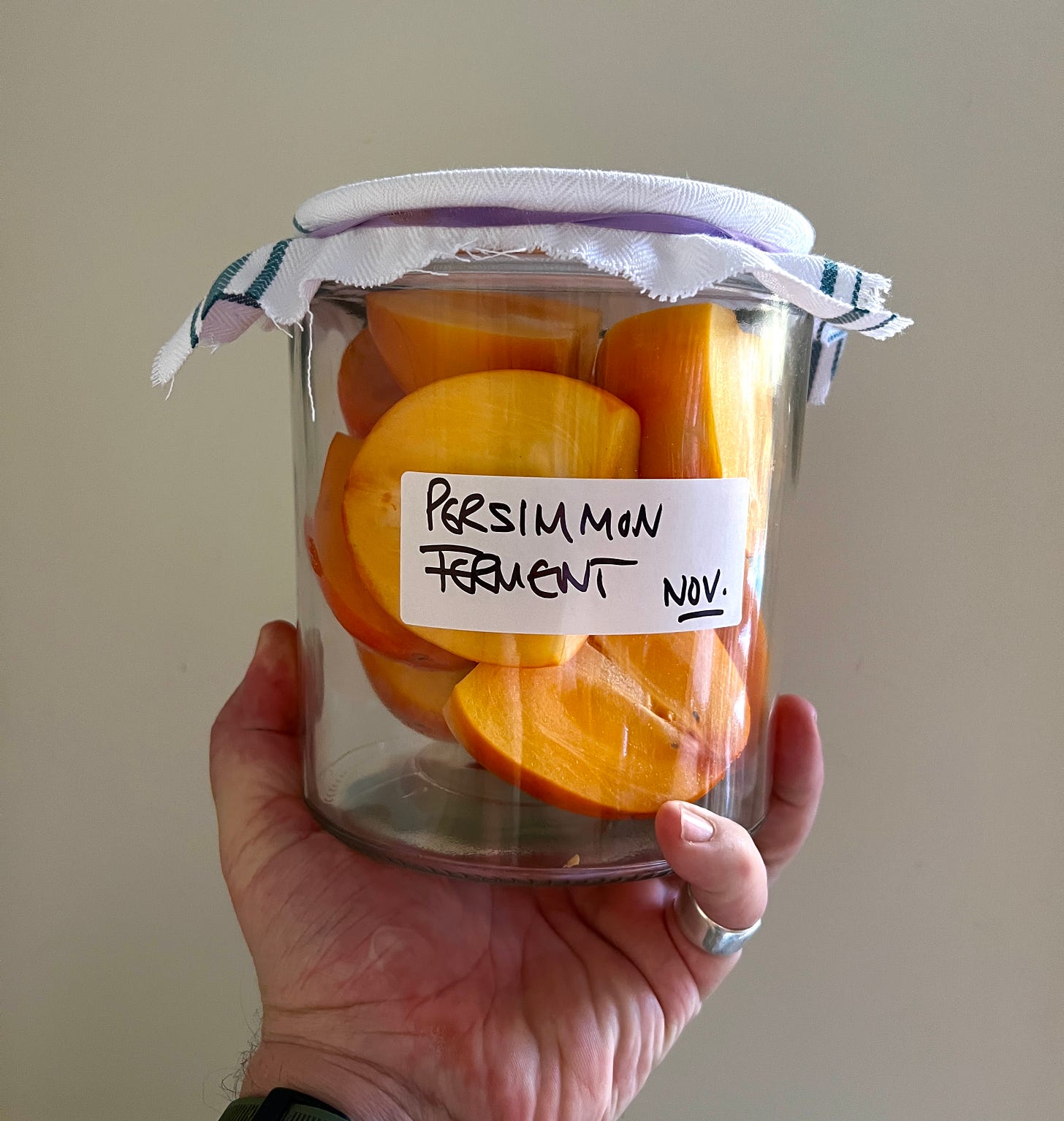
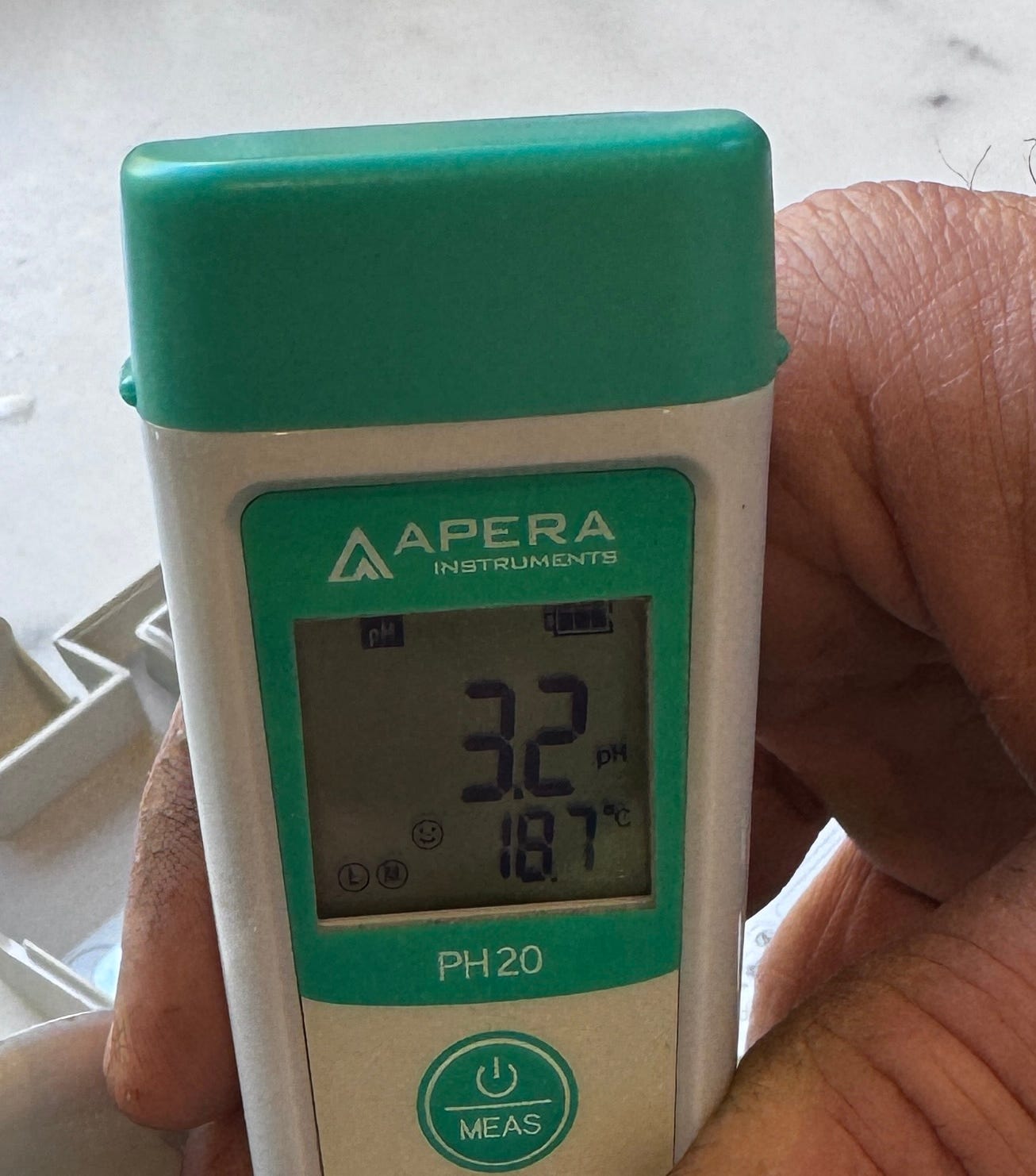
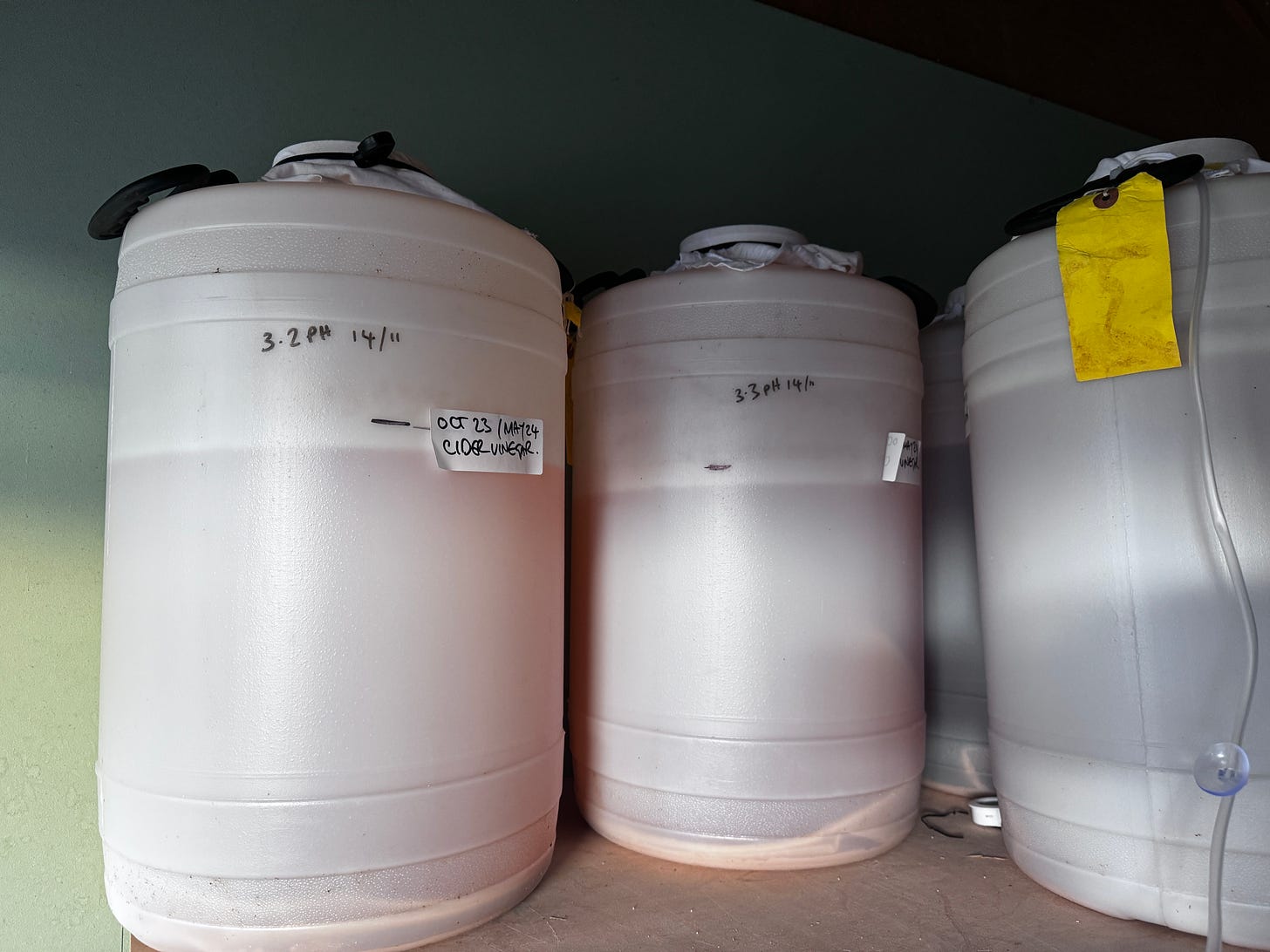
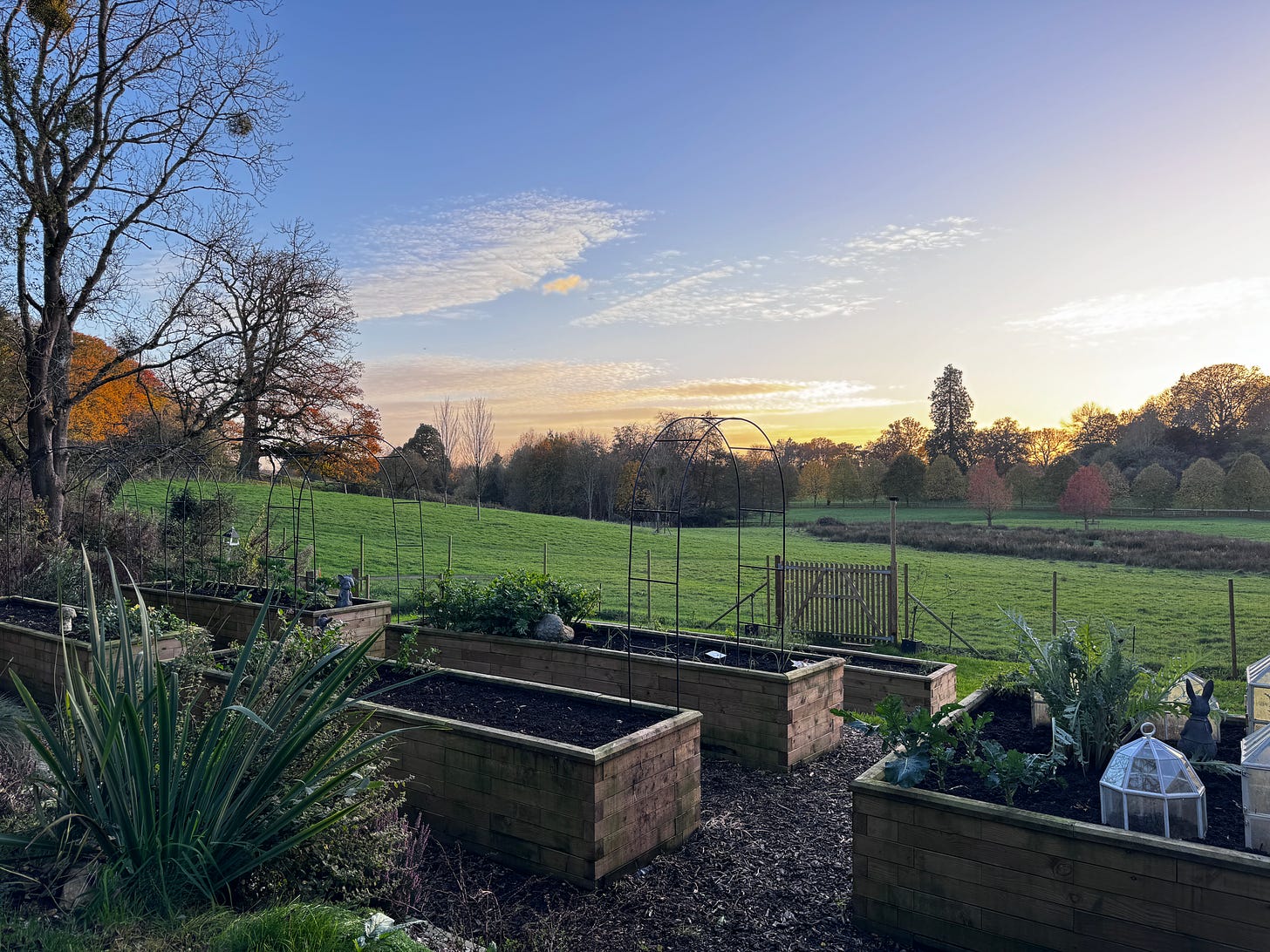
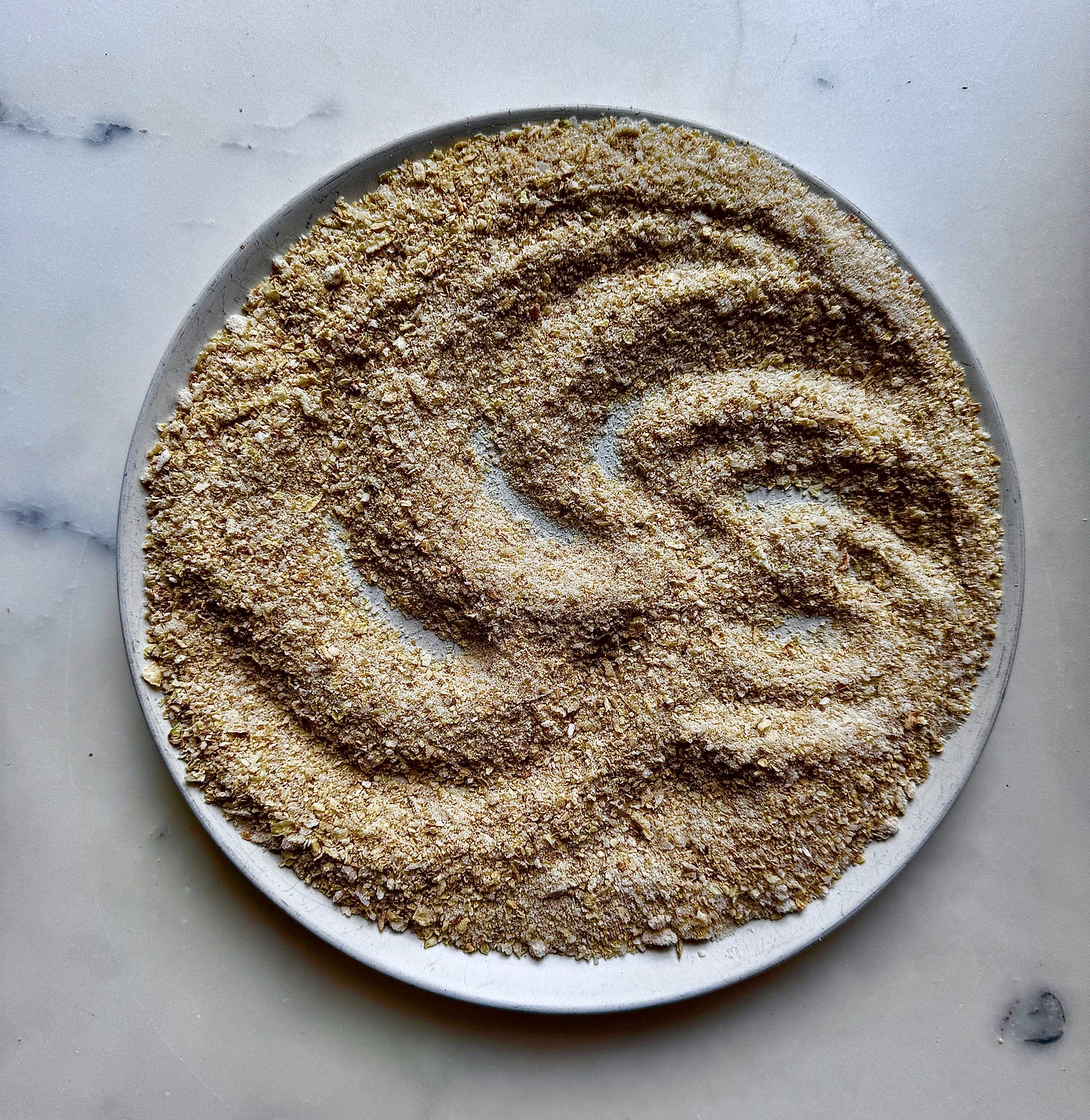
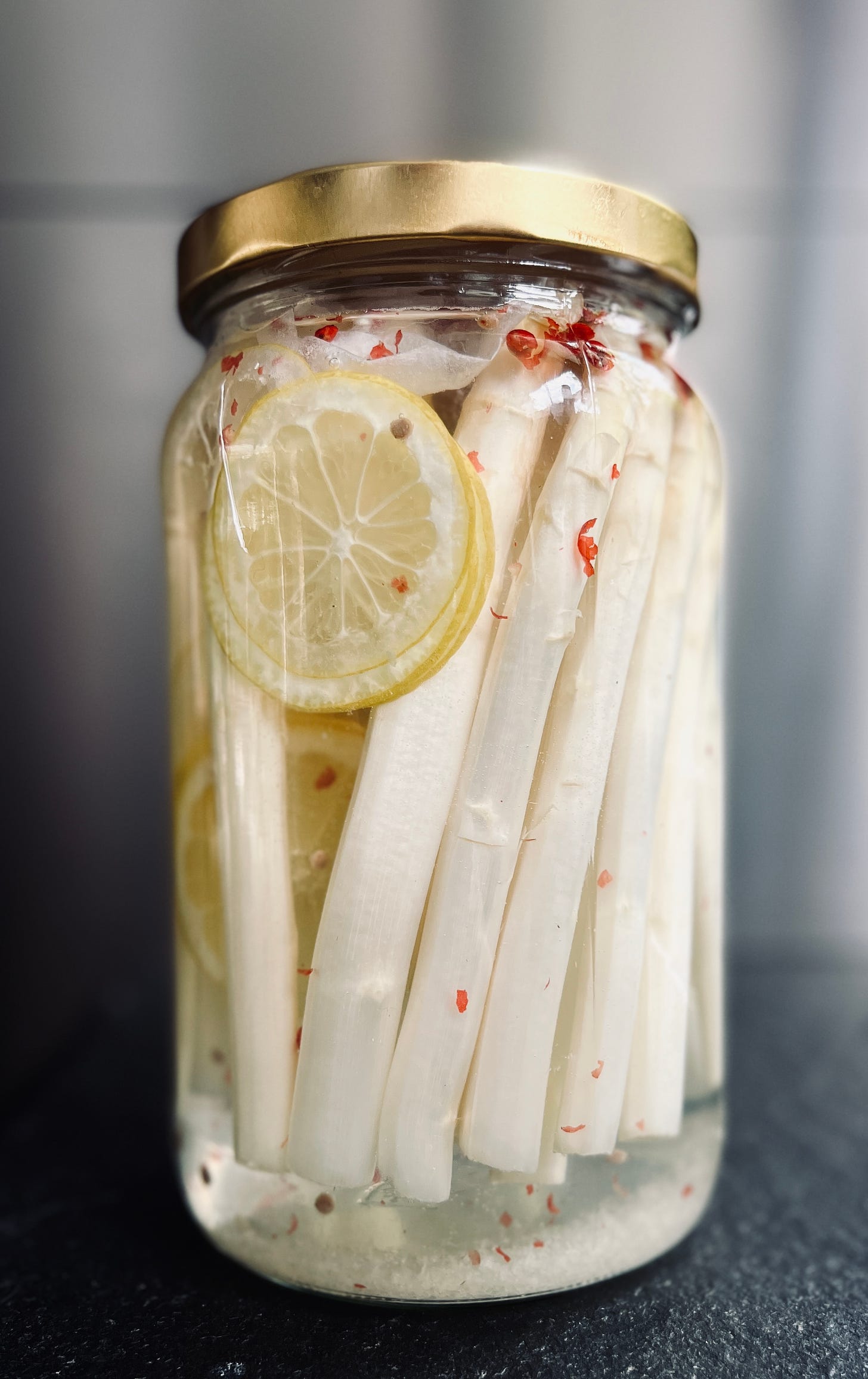
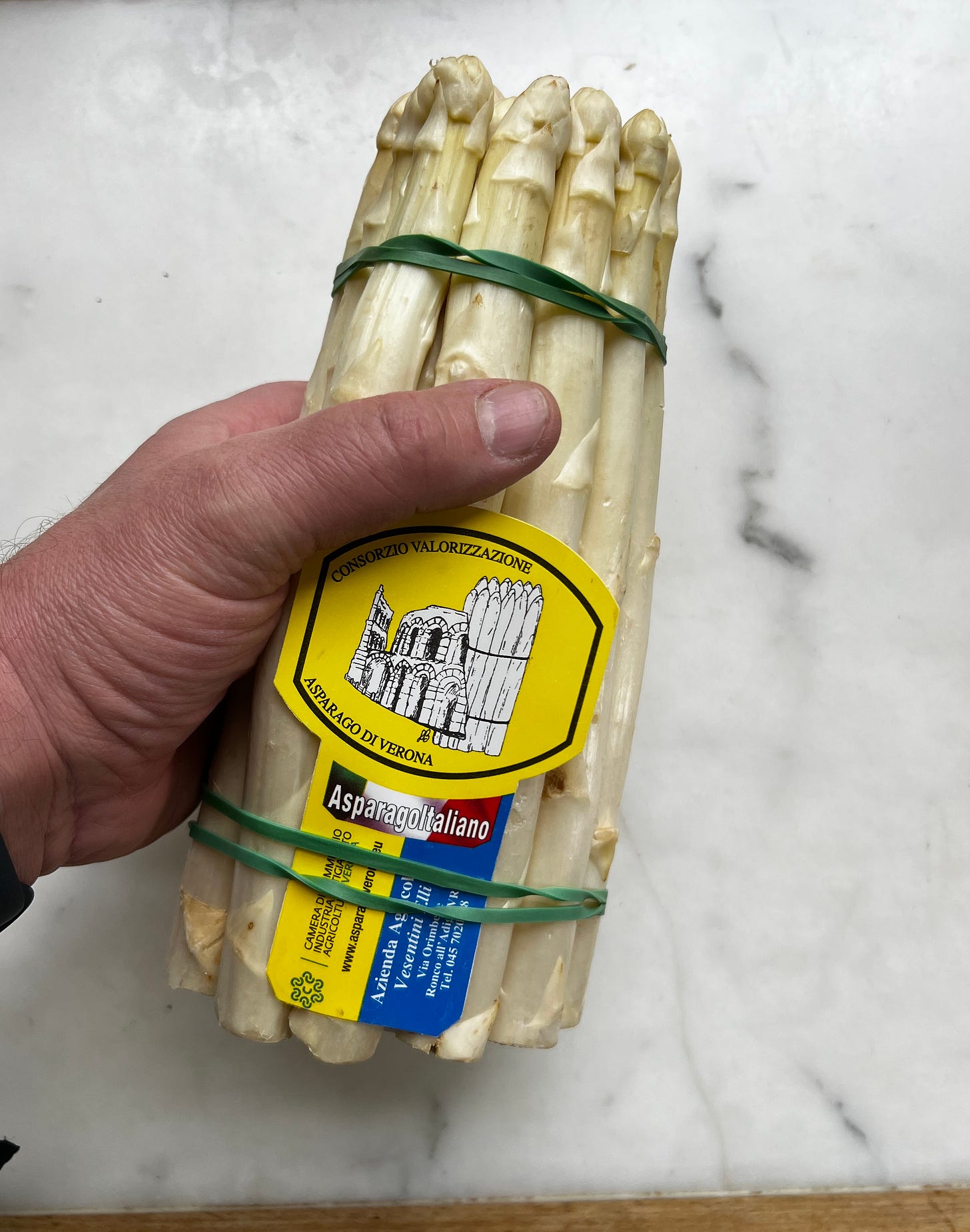
You lead such a charmed life! I’m saving this post for when white asparagus come ‘round again next spring.
Thanks for sharing the interview – that was extremely interesting, and it was delightful to gain a bit more insight into who you are and what you do.
If I’m ever privileged enough to visit you, I must experience walking through the storeroom that watches over your vinegar – that sounds like a remarkable sensory experience.